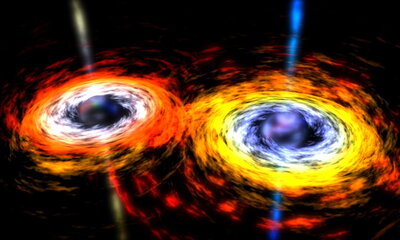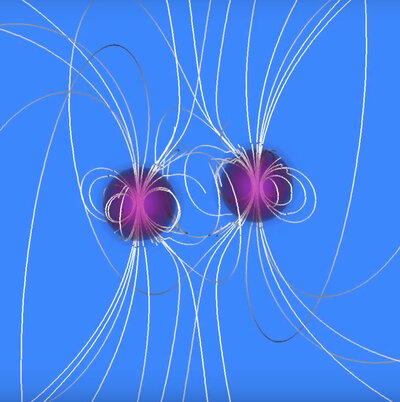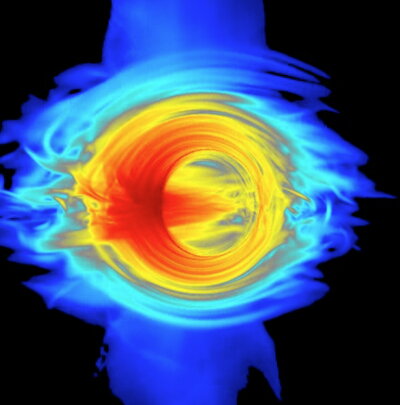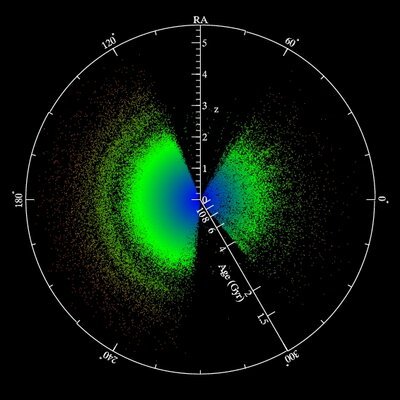
Compact objects are stellar remnants such as white dwarfs, neutron stars, and black holes, as well as their higher mass counterparts supermassive black holes in the centers of galaxies.
Research Highlights

Binary Black Holes
Binary black holes are of interest for multiple topics in astrophysics ranging from the detection of gravitational waves to galaxy evolution and cosmology. While the formation of massive binary black holes from galaxy mergers is almost inevitable, direct evidence remains uncertain. We develop new techniques to identify binary black holes on different scales across the Universe.
Links to research groups and facilities: Xin Liu, Stuart Shapiro, Yue Shen, DES, LSST, Blue Waters

Binary Neutron Stars and Binary Black Hole-Neutron Stars
Compact binaries containing neutron stars are of great interest for understanding the physics of nuclear matter under extreme conditions. They are copious emitters of gravitational waves and the likely engines that power short gamma-ray bursts. Understanding the nature of merging compact binaries and how to solve Einstein's equations of general relativity on supercomputers to obtain that understanding, is hotly pursued at the University of Illinois.
Links to research groups and facilities: Stuart Shapiro

Black Hole Accretion
Black hole accretion powers some of the most luminous objects in the universe, including quasars, active galactic nuclei, tidal disruption events, gamma-ray bursts, and black hole x-ray transients. We develop ab initio models of black hole accretion. We are especially interested in modeling sources for the Event Horizon Telescope, which will produced resolved images of the black hole in the galactic center, and in understanding the origin of state transitions and associated outflows.
Links to research groups and facilities: Charles Gammie

Cosmic Evolution of Supermassive Black Holes
The growth of supermassive black holes (SMBHs) and their possible influences on the formation and evolution of their host galaxies is an important topic in modern astronomy. We use large samples of active SMBHs (e.g., quasars) from surveys and smaller samples from dedicated programs to study their physical properties and evolution across cosmic time, as well as their impact on galaxy formation.
Faculty working in Compact Objects








